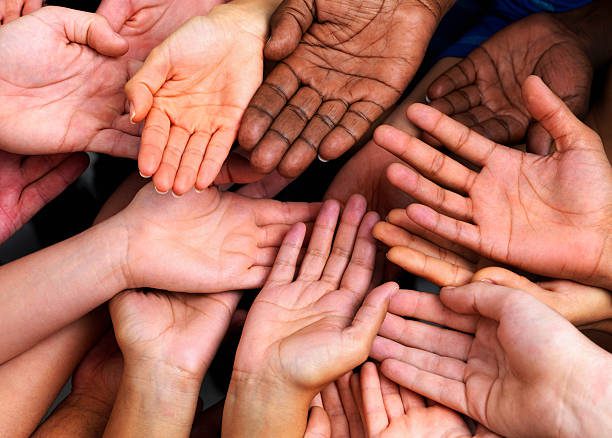
Introduction:
Humor, often described as a Art universal language, has the power to transcend cultural and linguistic boundaries. Translating English jokes and puns into Hindi is a delightful yet intricate task that involves more than linguistic proficiency—it requires an understanding of cultural nuances, wordplay, and the essence of comedy in both languages. In this blog, we embark on a journey to explore the art of translating humor, unraveling the complexities and joys of bringing laughter from one language to another.
1. The Challenge of Translating Humor:
Humor is inherently tied to culture, and what may be amusing in one language might not have the same effect in another. Translating English jokes and puns into Hindi poses a unique challenge—how to preserve the comedic timing, wordplay, and cultural references that make the joke funny in the first place.
2. Cultural Sensitivity in Humor:
Humor is deeply influenced by cultural norms, references, and societal values. Translators must navigate these nuances carefully, ensuring that the humor translates seamlessly while being culturally sensitive. What may be acceptable or funny in English might need adjustment to align with the sensibilities of Hindi-speaking audiences.
3. Understanding Linguistic Nuances:
Languages have their own idiosyncrasies, and humor often relies on linguistic quirks. Translators must be attuned to the unique linguistic nuances of both English and Hindi, including idiomatic expressions, colloquialisms, and regional variations, to capture the essence of jokes and puns accurately.
4. Preserving Wordplay:
Puns, a classic form of wordplay, present a particular challenge in translation. The play on words that elicits laughter in English may not have a direct equivalent in Hindi. Translators must creatively adapt art the wordplay, often resorting to alternative puns or linguistic devices that evoke a similar comedic effect.
5. Adapting to Hindi Cultural References:
English jokes frequently rely on cultural references familiar to English speakers. Translators must replace these references with their Hindi counterparts to ensure that the humor remains relevant. This involves a deep understanding of Hindi pop culture, social trends, and contemporary references.
6. Translating Situational Comedy:
Situational comedy, a staple in humor, involves translating not just words but the entire context of a joke. This requires an understanding of the cultural, social, and historical contexts that shape the humor in the original English joke. Adapting these situations for Hindi audiences involves a nuanced approach to maintain the comedic impact.
7. Navigating Regional Dialects and Vernacular:
Hindi, with its rich linguistic diversity, encompasses various dialects and vernacular expressions. Translators may choose to incorporate regional flavors to add authenticity to the translated jokes. However, this requires careful consideration to ensure that the humor is accessible to a broader Hindi-speaking audience.
8. The Role of Timing in Humor:
Timing is crucial in comedy, and translating jokes involves not just linguistic precision but an understanding of comedic timing. Translators must ensure that the punchline hits at the right moment in Hindi, aligning with the pacing and rhythm of the original English joke.
9. Cultural Adaptation of Satire:
Satire often plays a significant role in humor, offering commentary v on societal norms and behaviors. Translators must adapt satirical elements to resonate with Hindi cultural contexts, addressing relevant issues and idiosyncrasies in a way that provokes laughter while maintaining the critical edge of the satire.
10. Transcreation for Cultural Relevance:
Transcreation, the creative adaptation of content for a new cultural context, becomes paramount in translating humor. Translators may need to go beyond literal translation, infusing jokes with cultural nuances, idioms, and references that resonate with Hindi audiences, ensuring not just comprehension but genuine amusement.
11. Leveraging Indian Idioms and Phrases:
Incorporating Indian idioms and phrases can add an authentic touch to translated jokes. Translators may strategically use colloquial expressions that carry a humorous undertone in Hindi, allowing the humor to feel more rooted in the linguistic landscape of the audience.
12. Translating Double Entendre and Innuendo:

Jokes often involve double entendre and innuendo, relying on subtle or suggestive language. Translating these elements requires finesse to maintain the suggestive tone without crossing cultural boundaries or causing offense. Striking the right balance is crucial in ensuring that the translated humor is well-received.
13. Cultural Humor Preferences:
Cultural preferences in humor vary, and what is considered funny in art English-speaking cultures may differ from Hindi-speaking cultures. Translators must be aware of the comedic styles, preferences, and taboos prevalent in Hindi-speaking regions to tailor the humor accordingly.
14. Translating Visual and Physical Comedy:
Beyond linguistic elements, jokes may involve visual or physical comedy. Translators must find verbal equivalents that evoke the same visual or physical humor in Hindi. This may involve creative descriptions, onomatopoeia, or alternative approaches to convey the intended comedic effect.
15. Collaboration with Native Speakers:
Collaborating with native Hindi speakers, especially those with a keen sense of humor, can provide invaluable insights. Native speakers can offer feedback on the cultural authenticity of translated jokes, ensuring that the humor resonates with the intended audience.
16. Translating Internet and Meme Culture:
In the digital age, much humor is derived from internet culture and art memes. Translating jokes rooted in internet culture requires familiarity with online trends, memes, and digital references that may have distinct equivalents in the Hindi-speaking online sphere.
17. Adapting Jokes for Different Age Groups:
Humor often varies across age groups, with certain jokes being more suitable for specific demographics. Translators must consider the age group of the target audience and adapt jokes to align with the comedic sensibilities of different age brackets.
18. Translating Stand-up Comedy:
Stand-up comedy, with its reliance on delivery, tone, and audience interaction, presents a unique challenge in translation. Translators must capture not just the words but the comedic performance, ensuring that the translated stand-up routine retains the spontaneity and laughter-inducing qualities of the original.
19. Exploring Cross-Cultural Adaptation:
Some jokes may have universal themes that resonate across cultures. Translators can explore cross-cultural adaptation, identifying elements in English jokes that have universal appeal and adapting them seamlessly into Hindi without losing their comedic impact.
20. The Evolution of Language and Humor:
Languages and humor evolve over time, influenced by societal changes and cultural shifts. Translators must stay attuned to linguistic trends and evolving comedic styles in both English and Hindi, ensuring that translated jokes remain fresh, relevant, and reflective of contemporary humor.
21. Translating Wordplay in Puns:
Puns, often built on the multiple meanings of words, pose a unique challenge in translation. Translators must play with Hindi words and their meanings to recreate the wordplay, sometimes introducing new puns that align with the linguistic characteristics of Hindi.
22. Preserving the Element of Surprise:
Surprise is a fundamental element of humor, especially in art punchline-driven jokes. Translators must preserve the element of surprise in Hindi, ensuring that the punchline art catches the audience off guard and elicits genuine laughter.
23. Navigating Political and Social Satire:
Jokes often delve into political and social satire, reflecting on current events and societal issues. Translators must navigate these sensitive topics with care, adapting satire to align with Hindi contexts while maintaining a balance that ensures the humor does not become divisive or offensive.
24. Translation for Comedy Films and TV Shows:
Comedy in films and TV shows involves a combination of, visual gags, and situational humor. Translators working on subtitles or dubbing must synchronize the translation with the on-screen s, expressions, and comedic timing to ensure that the humor is conveyed effectively.
25. Incorporating Hindi Cultural References in Global Contexts:

When translating jokes for a global audience, incorporating art Hindi cultural references may require strategic choices. Translators can opt for references that have cross-cultural appeal, ensuring that the humor remains accessible to a diverse audience.
26. Exploring Regional Humor Traditions:
India has a rich tradition of regional art humor, including various forms of comedy in different languages. Translators can draw inspiration from these traditions, infusing translated jokes with regional flavors that resonate with specific Hindi-speaking communities.
27. Translation for Social Media Platforms:
Humor on social media platforms often relies on brevity, visual elements, and the rapid consumption of content. Translators must adapt jokes for social media, considering character limits, visual components, and the fast-paced nature of online humor.
28. Translating Humor for Educational Contexts:
In educational settings, humor can be a valuable tool for art engagement. Translators working on educational content must ensure that translated jokes align with the educational objectives, are age-appropriate, and contribute to a positive and inclusive learning environment.
Conclusion:
Translating English jokes and puns into Hindi is an art that requires a delicate balance of linguistic finesse, cultural acumen, and a deep understanding of comedic timing. As laughter knows no linguistic bounds, the translator’s task is to bridge the gap between languages, ensuring that the humor resonates art authentically with Hindi-speaking audiences. In this intricate dance of translation, jokes find new life, cultural references take on a Hindi flair, and the shared joy of laughter becomes a testament to the universality of human mirth. As we explore the art of translating humor, we celebrate the translators who, with wit and creativity, bring laughter from one language to another, enriching the tapestry of linguistic and cultural exchange.
